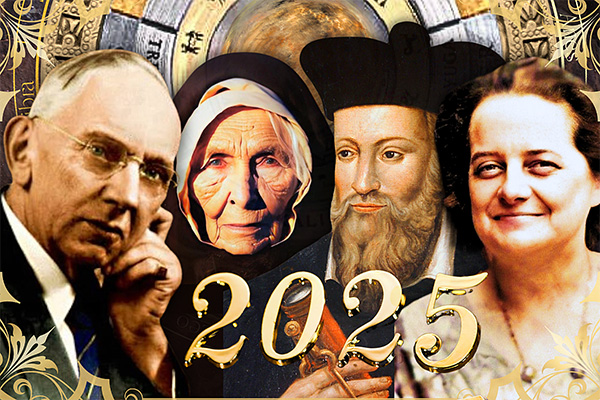Mysticism
Using Crystals To Attract Love And Money
 Crystals, with their metaphysical properties and magical allure, are a powerful tool for attracting love and prosperity as we enter a new year. By harnessing their unique energies to power our intentions, we can manifest more of the life we desire.
Crystals, with their metaphysical properties and magical allure, are a powerful tool for attracting love and prosperity as we enter a new year. By harnessing their unique energies to power our intentions, we can manifest more of the life we desire.
The metaphysical properties of crystals come from their unique molecular structure that resonates at certain frequencies. When we work with crystals, we are essentially aligning and amplifying our own energy field with these frequencies to amplify our intentions and manifest our desires by resonating more powerfully with the vibrations of the things we wish to attract into our lives.
Crystals and gemstones have been used for centuries in various cultures for their metaphysical power, healing properties, and ability to aid in magic and manifestation.
The ancient Egyptians valued crystals for both decorative and spiritual purposes. Egyptian priests and healers routinely used crystals for sacred rituals and healing, knowing that these stones had the power to connect them to the divine and balance energies.
In the Middle Ages, amethyst was often worn by the Christian clergy as a symbol of purity and spiritual wisdom. Garnet, another popular gemstone, was used as a talisman for protection during travel and to inspire love and devotion. In some Christian churches, chalices and crosses continue to be adorned with precious gems to symbolize sacred and divine qualities.
Abundance Rituals For A Prosperous 2025
 The universal energy of renewal and infinite possibility beckons as we enter the year 2025. The beginning of a new year is a great time to release old energies that no longer serve us and to invite a new wave of abundance, prosperity and fulfillment into our lives.
The universal energy of renewal and infinite possibility beckons as we enter the year 2025. The beginning of a new year is a great time to release old energies that no longer serve us and to invite a new wave of abundance, prosperity and fulfillment into our lives.
New Year’s manifestation practices not only clarify and align our intentions from the start, but also release energetic blockages, allowing prosperity and well-being to flourish. Releasing the old creates space for new possibilities and opportunities to flow into our lives.
The modern idea of setting intentions or “New Year’s resolutions” has its roots in various traditions. For centuries, cultures around the world have marked the transition to a new year with spiritual, esoteric, and religious practices and ceremonies.
In Mesopotamia, for example, the Akitu festival celebrated the Spring Equinox as the beginning of a new year and included rituals to honor the gods and ensure a bountiful harvest.
In Babylonia, at the beginning of each year, people made promises to their deities to return borrowed items and pay their debts. These promises were a way to start the year fresh and in good standing with the higher realms.
The ancient Romans perpetuated the tradition by dedicating the month of January to Janus, the two-faced god who looked both backward and forward to symbolize “looking back” on the past year and “looking forward” to the New Year, making it a time for personal reflection and new beginnings.
2025: Psychic Insights For The New Year
 As the final hours of 2024 tick away, the Psychic Access team reflects on the incredible journey we’ve shared with you this past year. To all of our valued clients and supporters, this message comes with heartfelt gratitude and warm wishes as we prepare to enter a new year together.
As the final hours of 2024 tick away, the Psychic Access team reflects on the incredible journey we’ve shared with you this past year. To all of our valued clients and supporters, this message comes with heartfelt gratitude and warm wishes as we prepare to enter a new year together.
The transition into a new year is always a powerful time. It’s a chance to pause and reflect on the lessons we’ve learned and the mistakes we’ve made. Every experience, whether joyful or painful, contains the seeds of wisdom. What did 2024 teach you about yourself? These reflections are not meant to create guilt, but to illuminate the path forward.
The year 2024 was filled with moments of incredible triumph, healing, and self-discovery for many of you, and it has been an honor to be with you every step of the way.
This past year also brought its share of karmic lessons and the overcoming of major setbacks and obstacles. For many, it was a year of intense growth through trial and tribulation — whether in relationships, career, health, finances, or spiritual awakening.
You turned to us for clarity in times of uncertainty, for connection with your guides, angels, ancestors and loved ones, and for divine guidance and spiritual insight to light your path.
Each interaction with you was a sacred exchange, an honor and a privilege, a moment when your courage and openness allowed us to support you in growth, healing and transformation.
The Mystical Purpose Of Daydreaming
 In school, I was often reprimanded for daydreaming. My eyes would glaze over as I gazed into the distance, lost in a magical world of my own.
In school, I was often reprimanded for daydreaming. My eyes would glaze over as I gazed into the distance, lost in a magical world of my own.
It amused the other children in the class and clearly frustrated my teachers, who mistook it for inattention or laziness, but even then I intuitively knew there was something valuable in my moments of mental wandering.
Little did I know that my frequent daydreaming opened doors not only to creativity and problem-solving, but also to spiritual connection, higher consciousness, and most importantly, manifestation.
Research has shown that daydreamers actually experience increased brain activity. Contrary to the common misconception that daydreaming equals a blank or stagnant mind, studies show that when we allow our minds to wander, we engage the problem-solving and creative areas of the brain.
Neurologically speaking, daydreaming activates the default mode network (DMN), a system in the brain that lights up when we are not focused on external tasks. The DMN connects us to deeper thoughts, memories, and emotions, often leading to sudden insights or realizations.
But what science describes as a purely neurological phenomenon is, in spirituality and metaphysics, a gateway to the higher self and beyond. When the mind wanders aimlessly, we enter an intermediate mental space — a threshold between the conscious and the subconscious. This is where creativity, intuition, psychic impressions, and spiritual connection are most accessible while awake.
Paranormal, Or Perinormal?
 When we hear the word “paranormal,” we often think of ghosts, psychic abilities, or UFO sightings. But what does the term really mean?
When we hear the word “paranormal,” we often think of ghosts, psychic abilities, or UFO sightings. But what does the term really mean?
Many of us have had moments that feel mysterious or beyond our understanding — experiences that challenge the way we see the world. What’s interesting is that these experiences aren’t always “paranormal” in the traditional sense — they may actually be “perinormal.”
Understanding the difference between these two ideas can help us see our everyday experiences in a new light, making it easier to connect with the mystical side of life without feeling overwhelmed by the unknown.
“The word “paranormal” comes from the Greek word “para,” which means “outside” or “beyond” normal. It refers to things that are beyond the limits of what we can scientifically measure or explain.
Paranormal experiences, such as ghost sightings or psychic phenomena, defy logic and leave a lasting impact on those who experience them. They’re those mystical or supernatural experiences that break the rules of reality and are completely “outside of normal.”
“Perinormal, on the other hand, comes from the word “peri,” meaning “around” or “near.”. These experiences are on the edge of “normal” — they’re those things we sense, feel, or observe that are related to subtle, measurable energies or natural laws, but also remain mysterious and unexplained.
Perinormal experiences show us that the spiritual and mystical are often much closer to reality than we realize – they just exist in a space we do not yet fully understand, or perhaps never will?

